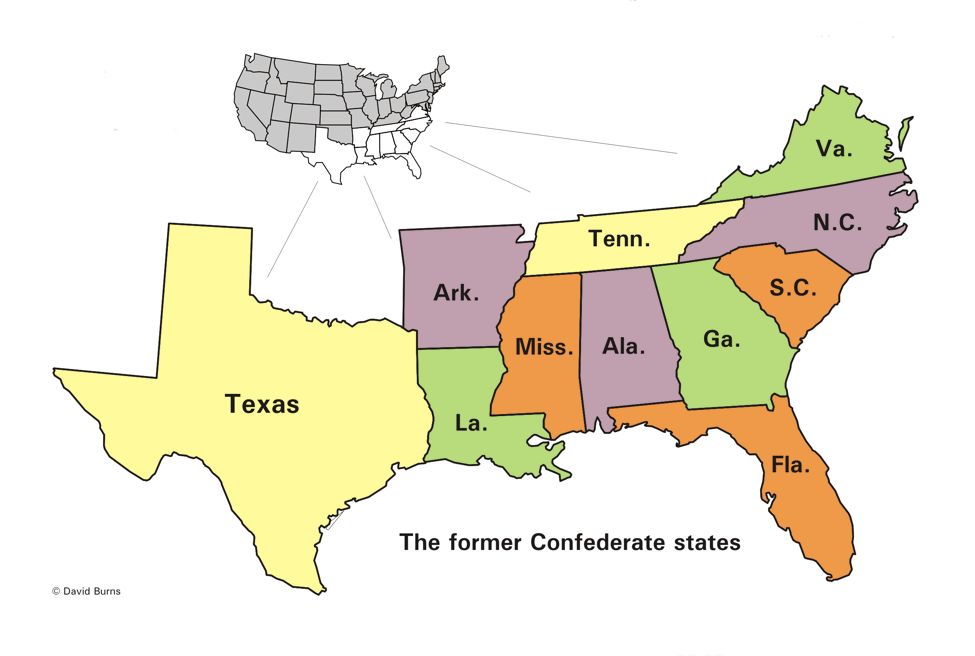| The Civil War
Ends
- Reconstruction Begins Fasttrack to America's Past |
|
|
Reconstruction began as the Civil War ended Reconstruction is the term for the period in American history right after the Civil War. The map shows the two sides of that conflict. The Union states, also called the North, are shown in yellow. Three additional states in the Union - California, Oregon, and Nevada - are further to the west and are not shown. The Confederate states - the states of the South - are shown in green. The Confederacy surrendered in April of 1865, after four years fighting. That ended the Civil War. The Reconstruction period lasted 12 years. They were years of great changes and challenges for all Americans, but especially for those in the South. |
|
It wasn't going
to be easy
As Reconstruction began, many people on both sides of the conflict were angry and resentful. Hundreds of thousands of people on both sides of the Civil War had died, and many more were wounded. Many homes, farms, and factories in the South had been destroyed or damaged. Each side blamed the other for causing the war. The photo below shows Richmond, Virginia, the capital of the Confederate States of America, at the end of the Civil War. |






